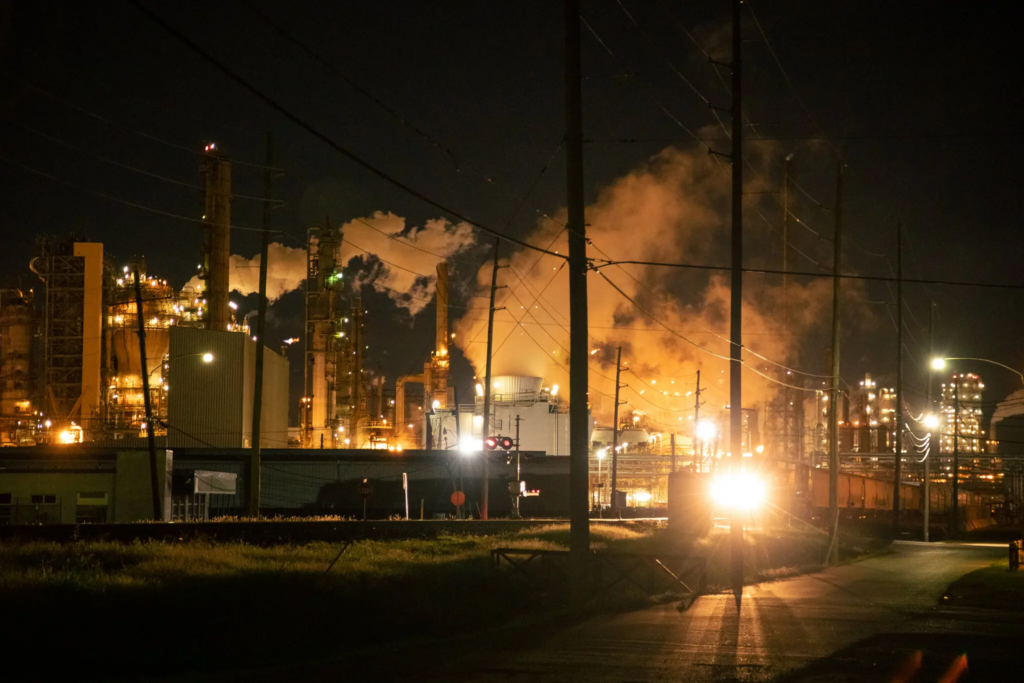The main purpose of this ongoing blog will be to track planetary extreme, or record temperatures related to climate change. Any reports I see of ETs will be listed below the main topic of the day. I’ll refer to extreme or record temperatures as ETs (not extraterrestrials).😉
Main Topic: The Vicious Cycle of Extreme Heat Leading to More Fossil Fuel Use
Dear Diary. Today’s main topic hits close to home since it is directly in association with my research on record temperature behavior the last twenty-five years and that of heat waves in general the last forty.
Beyond health issues in association with record heat, there are also energy issues since people will use more air conditioning to cool off if they have any during any heat spells. Across Asia from Pakistan to Vietnam and North into China people are rapidly utilizing AC to cool from more frequent record heat regimes from climate change. That requires much more energy.
Here is a new New York Times article that breaks down a vicious cycle developing between record heat and energy generation:
https://www.nytimes.com/2025/03/24/climate/extreme-heat-emissions-energy-trends.html
The Vicious Cycle of Extreme Heat Leading to More Fossil Fuel Use
A new report illustrates a concerning dynamic: Record heat last year pushed countries to use more planet-warming fossil fuels to cool things down.

A resident of Brooklyn with an air-conditioner in July. Credit…Graham Dickie/The New York Times
By Claire Brown
March 24, 2025
You’re reading the Climate Forward newsletter, for Times subscribers only. News and insights for a warming world.
Last year was the hottest on record, and global average temperatures passed the benchmark of 1.5 degrees Celsius above preindustrial times for the first time. Simultaneously, the growth rate of the world’s energy demand rose sharply, nearly doubling over the previous 10-year average.
As it turns out, the record heat and rapidly rising energy demand were closely connected, according to findings from a new report from the International Energy Agency.
That’s because hotter weather led to increased use of cooling technologies like air-conditioning. Electricity-hungry appliances put a strain on the grid, and many utilities met the added demand by burning coal and natural gas.
All of this had the makings of a troubling feedback loop: A hotter world required more energy to cool down homes and offices, and what was readily available was fossil-fuel energy, which led to more planet-warming emissions. This dynamic is exactly what many countries are hoping to halt through the development of renewable energy and the construction of nuclear power plants.
Put another way, the I.E.A. estimated that if 2024’s extreme weather hadn’t happened — that is, if weather was exactly the same in 2024 as in 2023 — the global increase in carbon emissions for the year would have been cut in half.
It’s not all bad news: Increasingly, the global economy is growing faster than carbon emissions. “If we want to find the silver lining, we see that there is a continuous decoupling of economic growth from emissions growth,” said Fatih Birol, the executive director of the agency.
We’re bringing this newsletter to you on Monday, instead of our usual Tuesday, to coincide with the release of the I.E.A. report. Here are five takeaways from last year’s energy trends. We’ll be back in your inbox on Thursday.
Extreme heat helped drive global demand
A major factor that raised global electricity demand last year was extreme heat, particularly heat waves in the U.S., China and India, the report found. Last spring, temperatures in New Delhi hit 126 degrees Fahrenheit, and temperatures in northern China broke records.
All that added load had consequences, the I.E.A. found. These temperature effects drove about a fifth of the overall increase in demand for electricity and natural gas.
Editors’ Picks
‘I Walked to the Q With a Bounce in My Step and a Twinkle in My Eyes’Overwhelmed by Cuteness? There’s a Word for That.Ode to a Gen-Z Situationship
Other electricity-intensive sectors grew in 2024. For example, data-center capacity grew by about 20 percent, mostly in the U.S. and China.
High temperatures led to burning more coal
Renewables, like solar and wind, are not that good at handling large, sudden upticks in electricity demand during heat waves. And they’re still not being deployed fast enough to meet global goals to triple renewable capacity by 2030.
To meet urgent demand for electricity and help people avoid heat stress, some countries burned coal to help power air-conditioners and other cooling technologies.
That led overall coal demand to increase by 1 percent last year to reach a record. The agency’s report found that the entire increase in coal demand could be explained by extreme temperatures.
China remained the world’s biggest global coal consumer, burning 40 percent more coal than the rest of the world combined.
Global electricity demand jumped
In 2024, global energy demand grew by a little over 2 percent, almost twice as much as the average annual increase over the previous 10 years.
This trend held across the board: Oil, natural gas, coal, renewables and nuclear all had an uptick in demand. Most of the global growth was concentrated in nations with emerging and developing economies, led by China and India.
The numbers were even up in the European Union, where energy demand has largely not grown since 2017, with a post-Covid rebound year being the exception.
The result of all this growth? Once again, energy-related carbon emissions reached a record in 2024. The I.E.A. estimated last fall that global carbon-dioxide emissions will peak in the next few years, then fall by 3 percent by 2030 under current national policy commitments.
Global emissions would need to fall by 43 percent by 2030 in order to keep global warming below the 1.5-degree Celsius threshold established in the 2015 Paris Agreement, according to the U.N. The temperature goal is seen as increasingly unattainable by scientists and policymakers.
Renewables and nuclear are growing
About 80 percent of new electricity generation came from renewables and nuclear least year, and renewables accounted for almost a third of total electricity generation.
Solar installations led the charge. In the United States, solar and wind electricity overtook coal for the first time.
Global carbon emissions would have been 7 percent higher last year without clean technologies like solar, wind, nuclear, electric cars and heat pumps, the report found.
For the first time, oil dipped below 30% of global energy demand
Growth in oil demand continued to slow last year, with factors including consumers’ buying electric vehicles and ditching gas-powered cars.
Last year, just two categories accounted for virtually all of the growth in oil demand: Aviation and shipping, and plastics.
Plastics have become an increasingly important part of oil companies’ growth plans as cars and trucks go electric and other sectors use less oil. Oil is a key material in plastics manufacturing.

The Shell chemical plant and oil refinery in Norco, La., subject to a federal pollution investigation. Credit…Bryan Tarnowski for The New York Times
E.P.A. investigations of severe pollution look increasingly at risk
Under the Biden administration, the E.P.A. took a tough approach on environmental enforcement by investigating companies over pollution, hazardous waste and other violations.
The Trump administration, on the other hand, has said it wants to shift the E.P.A.’s mission from protecting air, water and land quality to one that seeks to “lower the cost of buying a car, heating a home and running a business.”
As a result, the future of several long-running investigations suddenly looks precarious. A new E.P.A. memo lays out the latest changes.
E.P.A. enforcement actions will no longer “shut down any stage of energy production,” the memo, from March 12, says, unless there’s an imminent health threat. It also curtails a drive Biden started to address the disproportionately high levels of pollution facing poor communities. — Hiroko Tabuchi
Other NYT climate news

What Shopping Bags Should I Use?

Government Science Data May Soon Be Hidden. They’re Racing to Copy It.

In California, Confusion Abounds Over Status of 2 National Monuments

Trump and Newsom Find Common Ground Attacking California’s Coastal Agency

Wildfires Burn More Than 4,000 Acres in North Carolina
March 23, 2025

After the L.A. Wildfires, a Race to Save the Tiles, and the Soul, of Altadena

Greenland Races Into New Era Without Losing Grip on Inuit Traditions

Opinion | Iago Hale and Michael Kantar
Why Did Elon Musk Go After Bunkers Full of Seeds?
More climate news:
- Heatmap News obtained a list of the grants the E.P.A. has canceled.
- Growing cannabis, both the legal and illegal varieties, uses about 1 percent of America’s annual electricity, according to research highlighted by The Washington Post.
Related:
Here are more “ETs” recorded from around the planet the last couple of days, their consequences, and some extreme temperature outlooks, as well as any extreme precipitation reports:
Here is More Climate News from Sunday:
(As usual, this will be a fluid post in which more information gets added during the day as it crosses my radar, crediting all who have put it on-line. Items will be archived on this site for posterity. In most instances click on the pictures of each tweet to see each article. The most noteworthy items will be listed first.)